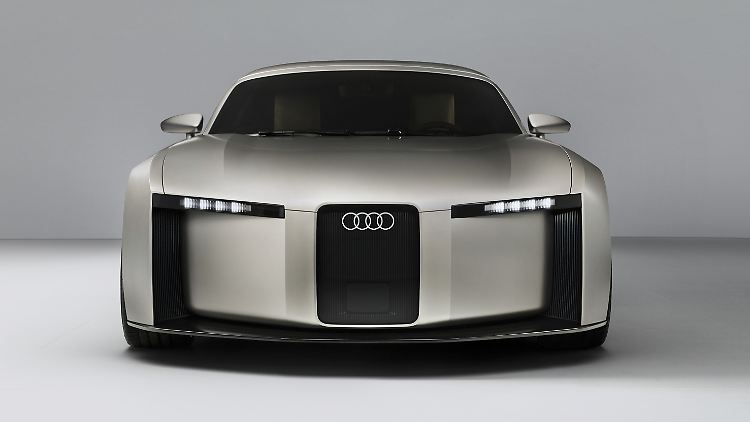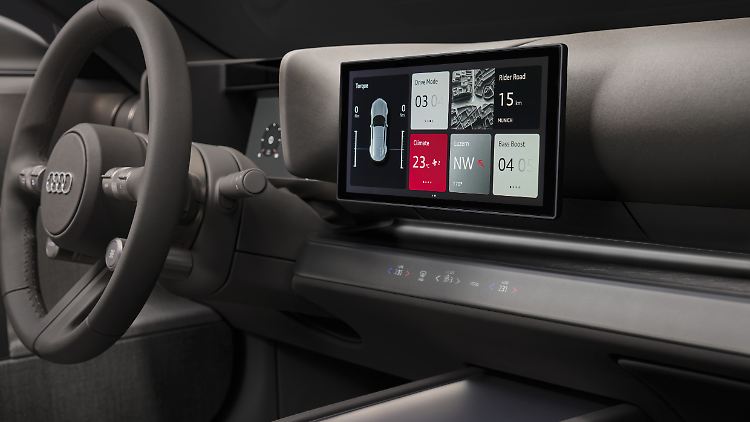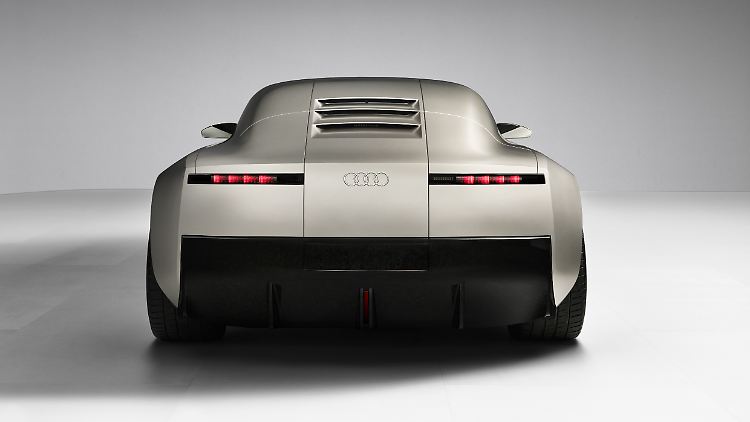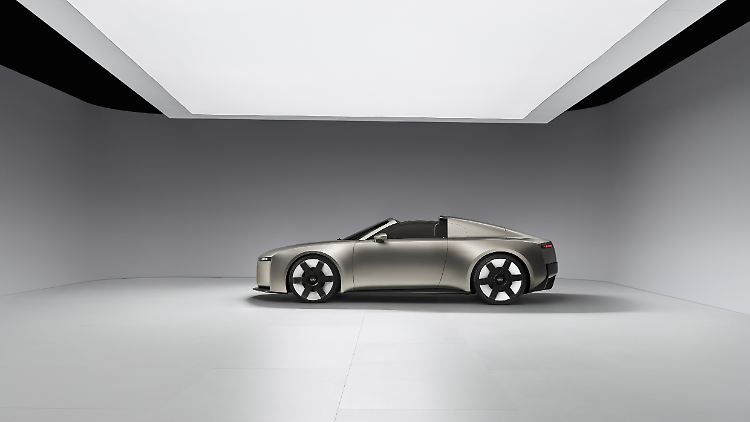Radical reorientation: Audi Concept C – the brand’s next sports car will be electric

A little bit of TT, a little bit of 1930s racing car: Audi references the past in its future design.
(Photo: Audi)
With a concept car, Audi aims to demonstrate its new design language and create a true sports car again. The Ingolstadt-based company hopes to gain momentum that will carry the entire company along—and attract as many new customers as possible. However, the "radically simple" strategy will likely not be an easy path.
A car like this would certainly draw enthusiastic crowds at the next IAA: 853 Newton meters of torque catapult the matte silver flatbed to a top speed of 340 km/h. The cockpit is clearly dominated by the purist steering wheel, with a few essential displays behind it. And the center of gravity is clearly in the middle behind the driver… if such a thing as a center of gravity can even exist with a curb weight of just 824 kg.
Six liters of displacement, 16 cylinders, infernal noise, and the perceived exhaust emissions of a medium-sized coal-fired power plant show that the Auto Union Type C racing car belongs to a bygone era of muscular mobility.

The roof of the Audi Concept C extends far back and ends flush.
(Photo: Audi)
Not for Massimo Frascella, however, who has been Chief Creative Officer at Audi for almost a year. The Italian is a fan of classic, clean design in the tradition of Cubism, Bauhaus—or, indeed, the style-defining icons of successful Audis and their predecessor brands. He's now demonstrating this at the IAA (September 9-14) with his first creation for the Ingolstadt-based company: the Concept C. The Targa is expected to go into production in just two years, largely as seen now.
"Radical simplicity"The design is intended to hark back to the glorious racers of the 1930s, as well as sedans like the third-generation A6 or the TT. "Radical simplicity is the core of our philosophy," is his motto. And radical recognizability – not just for fans of 1936 racing.

The Ingolstadt-based company does not want to reveal performance data yet.
(Photo: Audi)
The front of the Audi Concept C is once again dominated by the same large, upright frame that the historic C roared through the racetracks. However, it's strictly rectangular instead of oval like its forefather. Embedded in the frame are the four rings—and the future in the form of technology modules that hint at future assistance and lighting systems.
Anyone looking at the Concept C in the dark, however, will only see two narrow slits of light. The grille with its milled aluminum rings remains in the dark. With a new lighting signature, Frascella introduces a permanent distinguishing feature of new production Audis: four horizontal elements in the headlights and taillights form the visual identity.
Next real sports car after the end of the TT and R8The next true sports car after the TT and R8 will be purely electric—and likely all four wheels. The fact that the Concept C has no rear window, but only a rear-facing camera in one of its three gills, is also due to the drive concept with its centrally positioned battery. The Ingolstadt-based company isn't revealing performance figures yet.

Inside: reduced design.
(Photo: Audi)
However, there are other views in and out: The roof extends far back and ends flush. As in the historic Type C, the driver can also sit in the fresh air. This is possible thanks to an electrically retractable hardtop, which consists of two segments and allows for both closed driving and convertible operation.
Inside, the design focuses on reduction and a focus on classic strengths in the finish. Architectural surfaces and geometric shapes create a symmetrical sense of space for both passengers, while still keeping the driver in focus. Mechanical switches and buttons made of anodized aluminum emphasize the high level of craftsmanship with their satisfying click. The steering wheel forms the focal point, with solid metal rings and tactile elements. Materials such as aluminum, titanium, and wood—all genuine rather than painted plastic—feel high-quality, and daylight-like ambient lighting highlights the surfaces.

Mechanical switches and keys made of anodized aluminum make a satisfying click.
(Photo: Audi)
The operating concept follows the line of a restrained technological presentation, which Frascella's team calls "Shy Tech"; however, it can't be quite so "shy" if the Ingolstadt-based company wants to compete with the ubiquitous digital upgrades of its competitors. A retractable display consolidates the most important information, while physical control remains via the steering wheel and center console. The goal is a simple operating logic rather than a mere screen show. There's no head-up display in the concept, but instead a narrow bar above the driver display that shows essential figures, such as the speed.

The Concept C has no rear window, but only a camera in one of the three gills.
(Photo: Audi)
The new head of design, who moved to Audi from Jaguar/Land Rover, sees his design decisions not only as aesthetic, but also as strategic. "How does Audi feel to the customer? Our answer can be found in four principles: clear, technical, emotional, and intelligent. They form the foundation for everything we do." His boss, CEO Gernot Döllner, even says: "The way we design our vehicles is the way we will also design our company." The new design philosophy is therefore a corporate principle for Audi, which should be reflected in the design of the model portfolio and the product range structure as well as in the company's organizational structure.
Radical reorientation is a balancing act
Audi's Concept C is more of a strategic signal than a finished design.
(Photo: Audi)
This radical reorientation is a balancing act. Audi is trying to distinguish itself in a market where technology platforms are often shared group-wide. For example, the PPE and MEB drive platforms are shared with other Volkswagen brands, software with the US company Rivian, assistance systems with all group brands—and even the basis of the next sports car with the all-electric successor to the Porsche Boxster. While Tesla and Chinese brands aggressively and visibly showcase digital technology, Audi aims to score points with visual calm and craftsmanship.
But a design focus alone won't solve problems of brand loyalty, sales, and profitability. Emotional differentiation, such as the entry into Formula 1 starting in 2026, can be an important factor if it is consistently underpinned by technical substance. In this sense, the Concept C is less a completed design than a strategic signal: Whether the new "radical simplicity" is a viable path depends on its rapid and flawless implementation in production models—and on whether markets like China or the USA are as enthusiastic about this approach and electric sports cars as the aesthete Frascella.
Source: ntv.de, Peter Weißenberg, sp-x
n-tv.de





